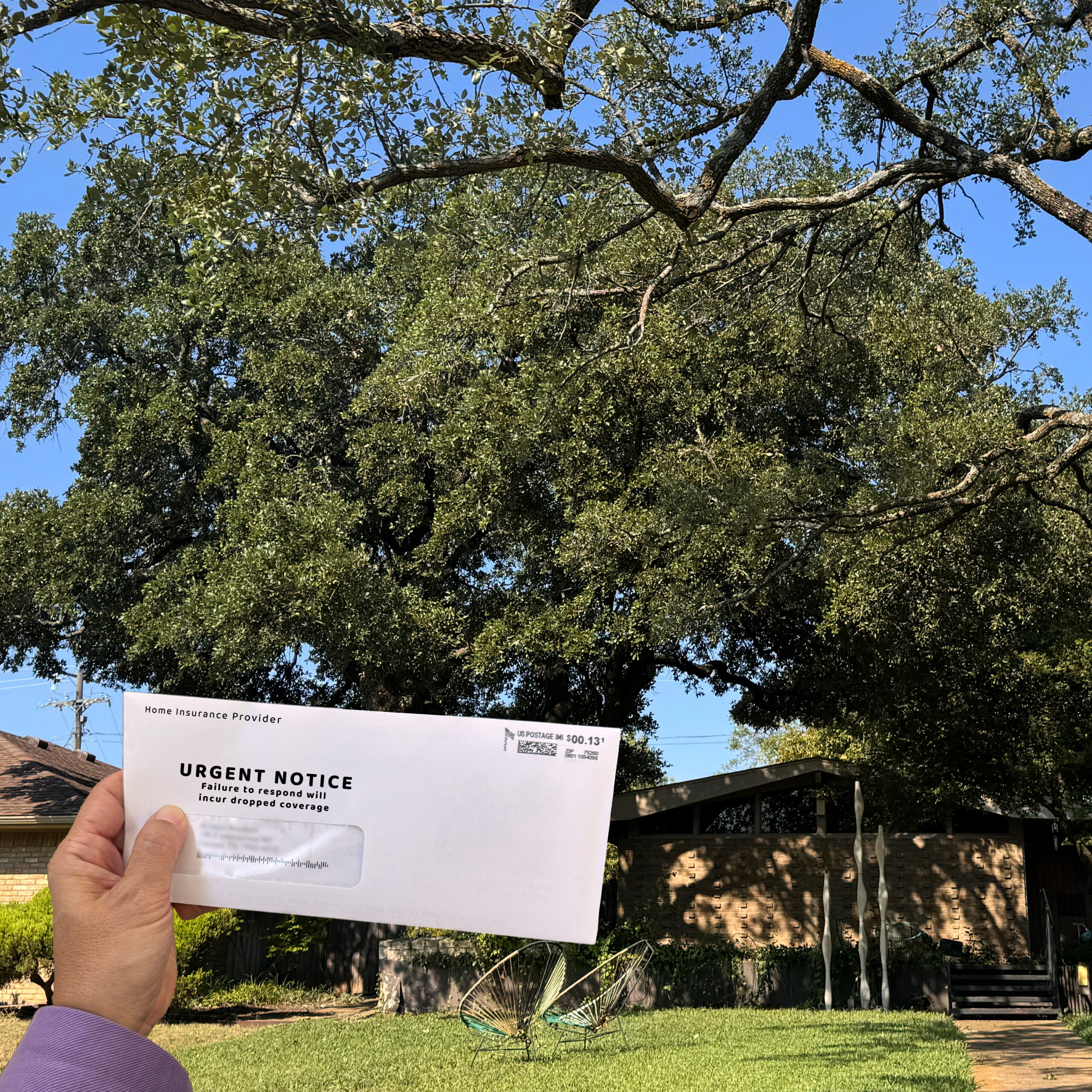Will My Trees Survive Freezing Temps and Winter Weather?

The effects of the historic freezing temperatures in February 2021 are widespread. After the ice thawed and the snow melted, many people were left with frost-damaged or dead landscaping. While much of the damage from the rapidly-changing temperatures is obvious, trees and plants have also suffered internal damage, and will likely show signs for years to come.
Will the freezing temperatures and winter weather kill my trees?
Unfortunately, we can already see the signs of frost-killed plants: leaves and other plant tissue that appears wet, soft, brown/black, or dried up. This type of damage is prevalent in succulents, pittosporum, loropetalum, geraniums, and related plants. Palms will likely also suffer extensive frost damage, but it is best to wait until the summer to see if they put out new growth.
Evergreens and more frost-resistant trees and shrubs should fare better. Common examples of this group of plants are yaupon hollies, wax myrtles, and crape myrtles. These species may brown in sections, but ultimately survive. Even if they survive, some of the brown sections will never recover. It is best to wait until summer for new growth to see the extent of the damage.
Trees with thinner bark, such as fruit trees and Japanese maples, may leaf out in the spring and appear unharmed. Damage to the inner layers of the tree, however, can prevent proper movement of water and nutrients in the tree’s vascular system and can lead to stress symptoms in the summer, appearing as a sudden browning and wilting of the leaves.
Larger native trees such as red oak and pecan may show dieback or brown sections, but should recover if cared for properly. Live oaks may show browning, but should recover and put out new leaves in spring.
Frost Cracks
Frost cracks are caused not by surface frost, but by fluctuating temperatures, and are most-often seen on the southern sides of trees, which get more direct sunlight. On a cold but sunny day, the sun warms the exposed areas of the tree, causing expansion. When temperatures drop rapidly at night, the bark cools and shrinks faster than the tissue underneath. As the bark shrinks, it splits vertically over areas where the underlying wood is still expanded. Splitting and cracking is most common in areas where there are wounds or other damage that has weakened the bark. Young trees and trees with thin bark are especially susceptible. Frost cracks are rarely fatal and will heal over time, but can be entryways for disease and insects. Stressed trees exhibiting cracks should be given special attention and should be properly fertilized and cared-for to help protect against diseases and insect activity.
CAN I DO ANYTHING TO HELP MY TREES RECOVER FROM THE FREEZING WEATHER?
For freeze-damaged plants, it is important to provide proper care in the short and long term.
WHAT YOU SHOULD DO NOW: WAIT!
- Watch for signs of damage.
- Browning and widespread leaf drop will be common.
- Wait until spring or summer before deciding if a plant is salvageable.
- Water correctly.
- Once the ground has thawed out, and temperatures are consistently above freezing, do a deep soak watering for the roots of trees.
- Use a hose, not sprinklers.
- Watering can help a tree with damaged leaves to take up nutrients.
- Once the ground has thawed out, and temperatures are consistently above freezing, do a deep soak watering for the roots of trees.
WHAT YOU SHOULD DO IN THE SPRING
- Have frost-damaged trees evaluated by an local ISA Certified Arborist.
- Every tree species will react differently to the freeze.
- Factors like location, soil conditions, and even the movement of the storm front will affect the trees’ ability to survive.
WHAT YOU SHOULD DO OVER THE NEXT FIVE TO SEVEN YEARS
- Fertilization and proper watering will be key to freeze-damaged trees.
- Nutrient-rich soil with beneficial bacteria and fungi can speed a tree’s recovery.
- Do not use herbicides around affected plants.
- Never use a “weed and feed” product near your trees.
- Continue proper maintenance trimming and care.
- Remove dead wood and loose bark, thin for light and air.
At Texas Tree Surgeons, we love trees and we love our community! The freezing weather in February 2021 caused damage not just to North Texas’s infrastructure, leaving many without power, water, and shelter, but also to our urban forest. Once the needs of our residents have been met, it’s a good time to think about how best to care for our frost-damaged trees and shrubs. We are here to help you evaluate the damage to your landscaping and make an informed decision about how to proceed. If your trees and shrubs don’t leaf out in the spring, or you have any other questions, let us know! We have a team of ISA Certified Arborists ready to help in any way we can!
Related Blogs
Similar blogs related to this topic


Facts About Home Insurance & Trees
It’s becoming way too common, especially in Texas, homeowners receiving a threatening letter from their insurance company to drastically remove all tree limbs over a structure to prevent them from falling onto the house. Don’t…
Read more

How Does Summer Weather Affect Oak Tree Health in Dallas-Fort Worth?
As we transition out of Oak Wilt season we are now in the thick of extreme heat and long days in full sun. Summers in Dallas-Fort Worth can be quite intense with soaring temperatures and…
Read more

